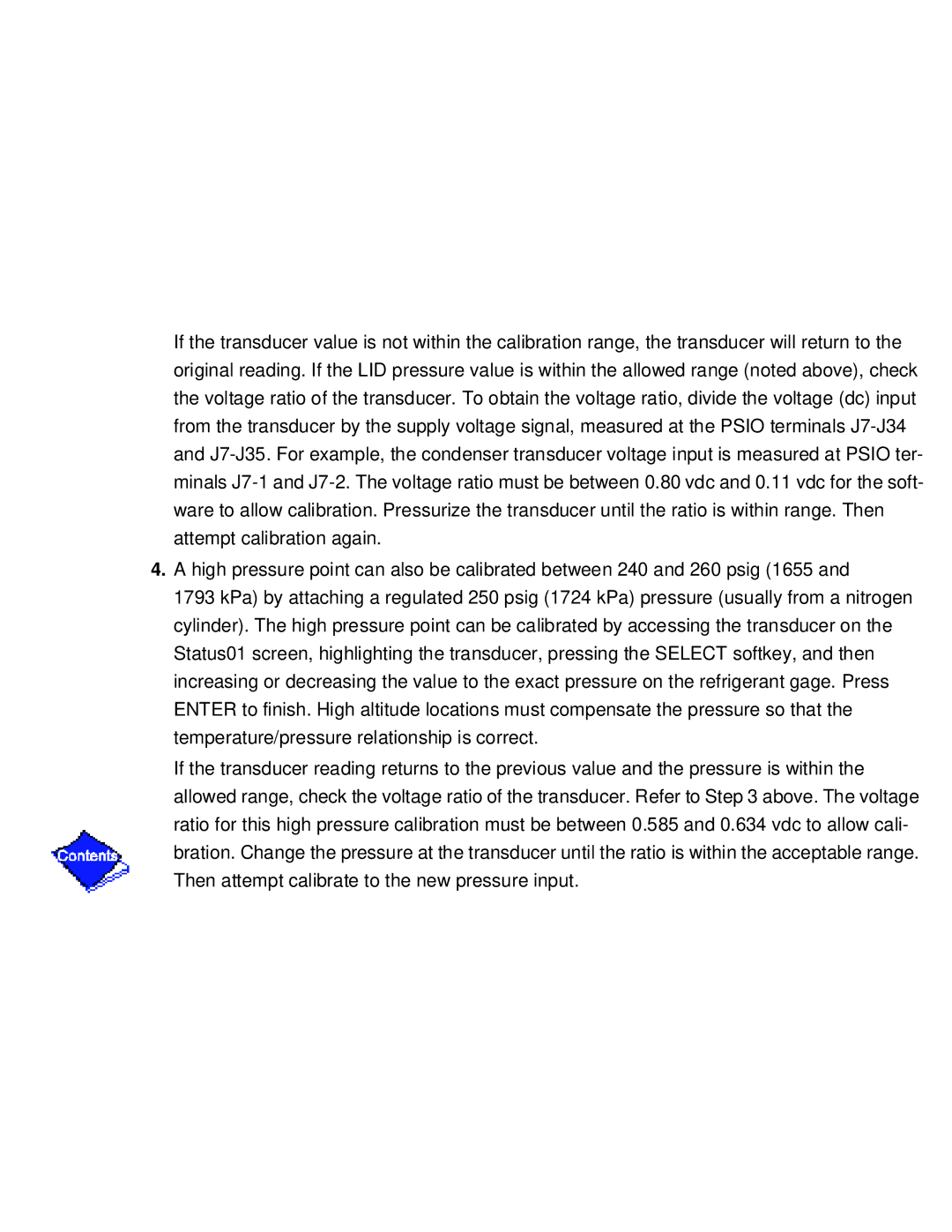
If the transducer value is not within the calibration range, the transducer will return to the original reading. If the LID pressure value is within the allowed range (noted above), check the voltage ratio of the transducer. To obtain the voltage ratio, divide the voltage (dc) input from the transducer by the supply voltage signal, measured at the PSIO terminals
4.A high pressure point can also be calibrated between 240 and 260 psig (1655 and
1793 kPa) by attaching a regulated 250 psig (1724 kPa) pressure (usually from a nitrogen cylinder). The high pressure point can be calibrated by accessing the transducer on the Status01 screen, highlighting the transducer, pressing the SELECT softkey, and then increasing or decreasing the value to the exact pressure on the refrigerant gage. Press ENTER to finish. High altitude locations must compensate the pressure so that the temperature/pressure relationship is correct.
If the transducer reading returns to the previous value and the pressure is within the allowed range, check the voltage ratio of the transducer. Refer to Step 3 above. The voltage ratio for this high pressure calibration must be between 0.585 and 0.634 vdc to allow cali- bration. Change the pressure at the transducer until the ratio is within the acceptable range. Then attempt calibrate to the new pressure input.
